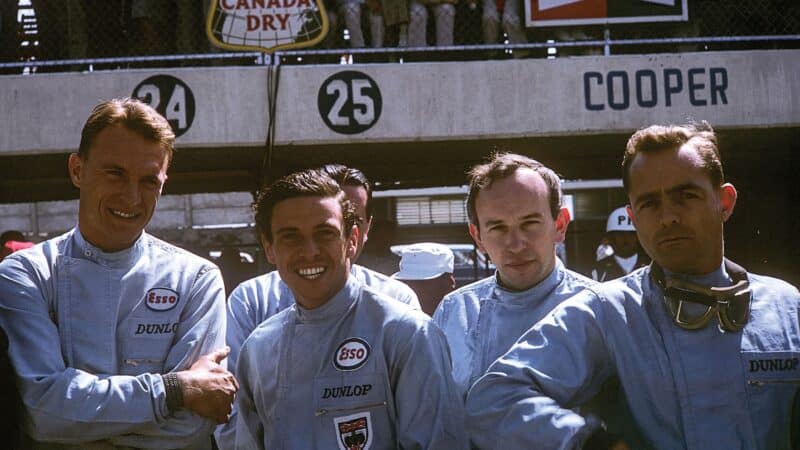1964 F1 season: Surtees, Clark and Hill fly the flag on a barnstorming season
A dramatic end to a closely-fought 1964 F1 season made John Surtees the first world champion on two and four wheels
Getty Images
What’s blue-and-white and red all under? John Surtees’ Ferrari 158 wore North America’s racing colours at a topsy-turvy Mexico City decider, its welfare ostensibly catered for by influential US importer Luigi Chinetti’s NART organisation. This was due to Enzo’s hue and cry over the Italian national body’s stubborn refusal to sanction the homologation of his mid-engined 250 LM as a GT.
Surtees, already a multiple motorcycle world champion for domineering Count Agusta, was used to but still often bemused by the Latin temperament and its attendant ‘decisions’. Rare in being offered a second chance to join Scuderia Ferrari after a first refusal, his influence extended beyond a number one’s usual reach, for a team increasingly isolated by British supremacy. His push for open-minded modernisation met with some success – yet much of Maranello’s convoluted inner workings remained closed off to him.

John Surtees, US GP
Getty Images
Ferrari’s Ford/Fiat fandango meant that June’s Le Mans 24 Hours had become even more of a priority for Enzo – and also likely had something to do with the reliance on a middling V8 in Formula 1 when a direct switch from V6 to designer Mauro Forghieri’s new flat-12 carried so much more potential. Just 10 points from the first five (of 10) rounds founded Surtees’ fears for an exhausted team arriving lately and in disarray to grands prix fully three weeks after Le Mans.
The title battle seemingly lay between reigning world champion Jim Clark – his Lotus no longer the dominant force it had been in 1963, but able to win three of those first five GPs – and the much-improved BRM and Brabham of Graham Hill and Dan Gurney, victorious in Monaco and France respectively.
Ferrari at last got its act together and wins for Surtees at the Nürburgring, a circuit where he was arguably even better than Clark, and Monza – sandwiching one for team-mate Lorenzo Bandini in Austria – put both him and his team in the hunt.
Lotus, its Type 33 update proving difficult to sort on the plumper 13in Dunlops for which it had been intended, was slumping; Brabham was finding reliability harder to come by than it did speed; and BRM’s robustness vanished when Hill’s clutch failed on the Monza grid.
A victory for Hill at Watkins Glen put him ahead in the standings before the finale in Mexico City, five points (net) in front of Surtees. The permutations were numerous – but Clark, nine points (net) behind, had to win to stand any chance of defending his crown. Leaping from pole, he romped away.

From left, Dan Gurney, Jim Clark, Surtees and Phil Hill, Mexico City
Getty Images
In contrast, his rivals were recovering (slowly) from poor starts – a hesitating engine for Surtees and a broken goggles’ strap for Hill! Just before half-distance Surtees watched Lorenzo Bandini, now aboard the faster flat-12, pitch Hill into a spin that cost the BRM contender the clinching third place, plus a long pitstop to have an exhaust pipe, bent suffocatingly against the barrier, broken off.
The title was now Clark’s to lose. Entering the final lap he threw up his hands. The dropped oil he had been avoiding was from his Climax V8: a pipe had split. Gurney swept by for a consolatory success – and Bandini, one eye on sinking oil pressure, moved aside so that his team leader might earn six points.
Nobody has matched Surtees’ winning of titles on two and four wheels – he had won a race on three, too, as a sidecar passenger to his father! – yet this greatest of motoring sportsmen’s overriding memory of 1964 is one of frustration. Forced from Ferrari just before Le Mans 1966 by incessant unhelpful politics, this driven man could/would not be ‘replaced’ until Niki Lauda’s signing eight years later.